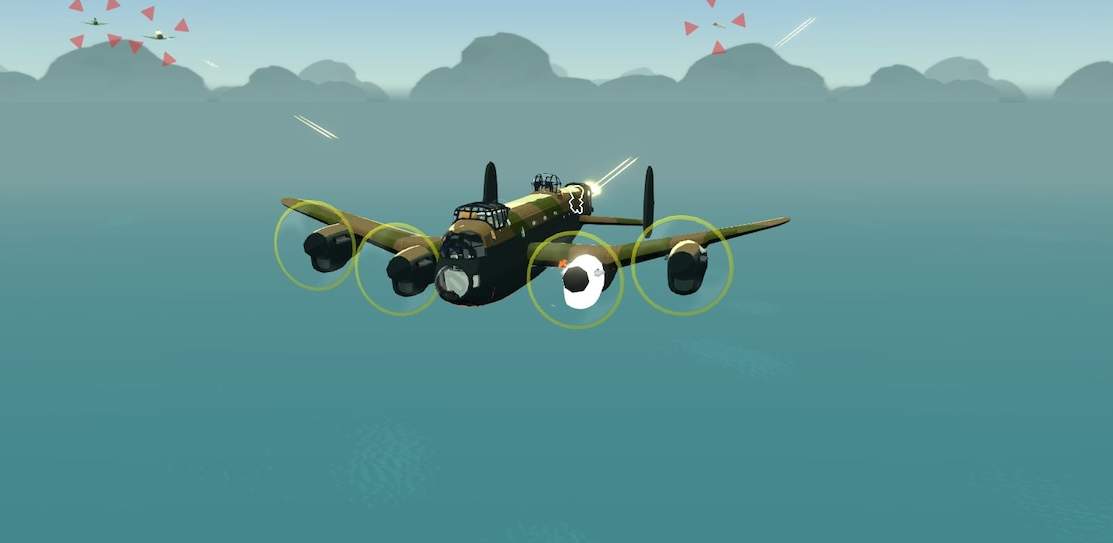

- #BOMBER CREW LANDING WITH ONE WHEEL SKIN#
- #BOMBER CREW LANDING WITH ONE WHEEL PLUS#
- #BOMBER CREW LANDING WITH ONE WHEEL WINDOWS#
The Consolidated Aircraft Corporation first made it, with the initial flight in 1939. The plane existed and was flown for one purpose only: to carry 500- or 1,000- pound bombs and drop them accurately over enemy targets. Absolutely nothing was done to make it comfortable for the pilot, the copilot, or the other eight men in the crew, even though most flights lasted for 8 hours, sometimes 10 or more. The seats were not padded, could not be reclined, were cramped into so small a space that a man had almost no chance to stretch and none whatsoever to relax.

It had to be done with care because the aluminum doors, which rolled up into the fuselage instead of opening outward on a hinge, had only a ioo-pound capacity, so if a man slipped, he would break through. There was no aisle to walk down, only the eight-inch-wide catwalk running beside the bombs and over the bomb-bay doors to move forward to aft. But there was no food anyway, unless a crew member had packed in a C ration or a sandwich. There were no kitchen facilities, no way to warm up food or coffee.

#BOMBER CREW LANDING WITH ONE WHEEL SKIN#
A man had to be desperate to use it, because of the difficulty of removing enough clothing and exposing bare skin to the arctic cold. Defecating could be done only in a receptacle lined with a wax-paper bag.
#BOMBER CREW LANDING WITH ONE WHEEL PLUS#
Plus which, the tubes were often clogged with frozen urine. To urinate, there were two small relief tubes, one forward and one aft, which were almost impossible to use without spilling because of the heavy layers of clothing the men wore. If the men at the waist touched their machine guns with bare hands, the skin froze to the metal. The oxygen mask often froze to the wearer’s face.
#BOMBER CREW LANDING WITH ONE WHEEL WINDOWS#
The wind blew through the airplane like fury, especially from the waist gunners’ windows and whenever the bomb-bay doors were open. There was no heat, despite temperatures that at 2.0,000 feet and higher got as low as 40 or even 50 degrees Fahrenheit below zero. Breathing was possible only by wearing an oxygen mask-cold and clammy, smelling of rubber and sweat-above 10,000 feet. It had no windshield wipers, so the pilot had to stick his head out the side window to see during a rain. Steering the four-engine airplane was difficult and exhausting, as there was no power except the pilot’s muscle.

It could carry a heavy load far and fast, but it had no refinements. The B-24 was built like a 1930s Mack truck, except that it had an aluminum skin that could be cut with a knife. McGovern flew out of Cerignola, on the east coast of Italy, and what he experienced during his early missions is emblematic of everything suffered by everyone who served in the B-24S. The Dakota Queen was part of the 74ist Squadron, 455th Bomb Group, i5th Air Force. George McGovern, a young man with a future, who piloted a 6-24 christened Dakota Queen after his wife, Eleanor. But the author focuses on the z 2-year-old Lt. Ambrose tells the story of this immense operation through the experiences of scores of those who figure in the subhead of the book: The Men and Boys Who Flew the 6-245 Over Germany. In his new book, The Wild Blue, Stephen E. EVEN IN OUR ERA OF CEASELESS TECHNOLOGICAL REtfinements, the American strategic bombing campaign of World War II remains an effort of almost unimaginable complexity and scope.


 0 kommentar(er)
0 kommentar(er)
